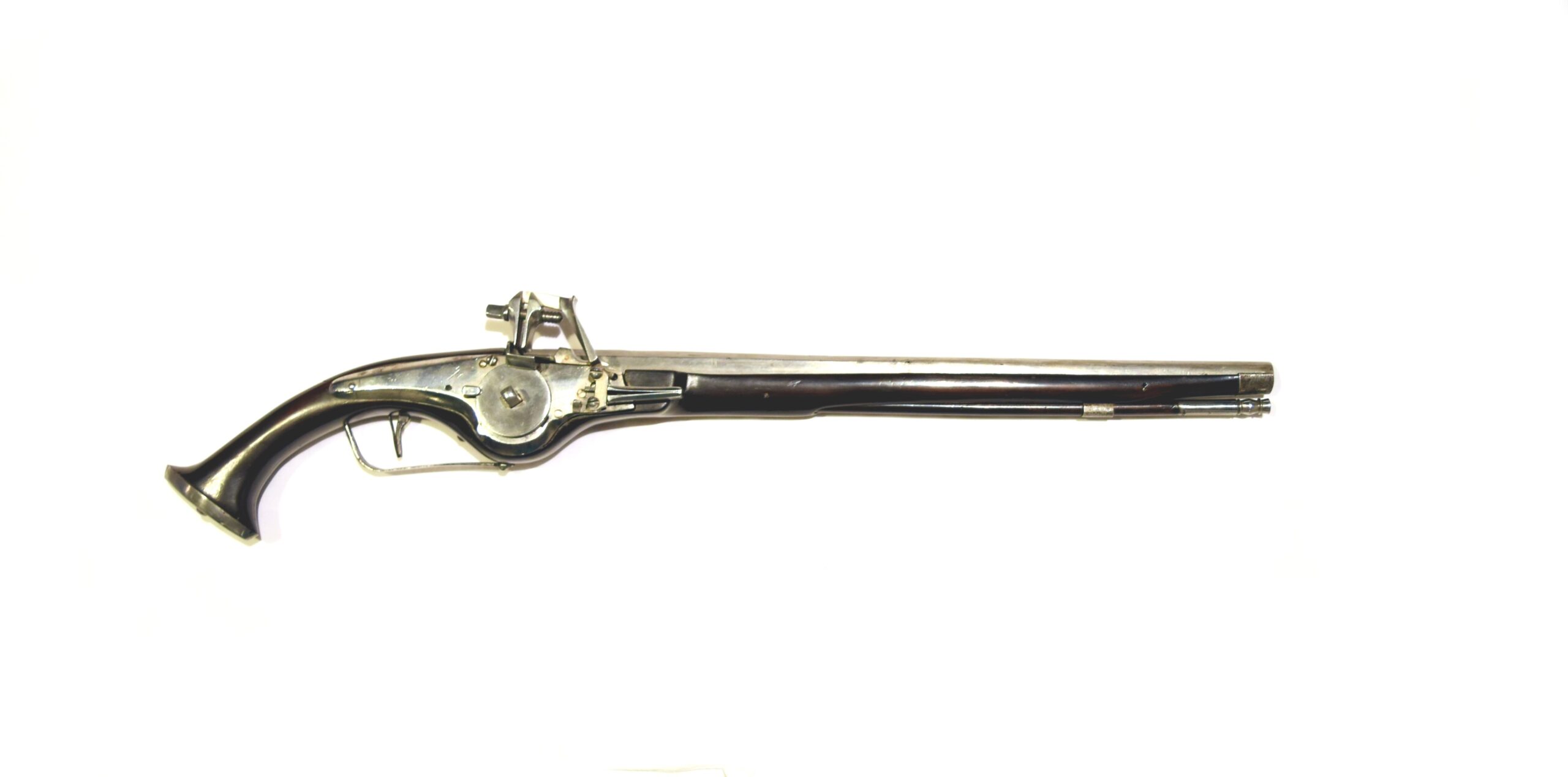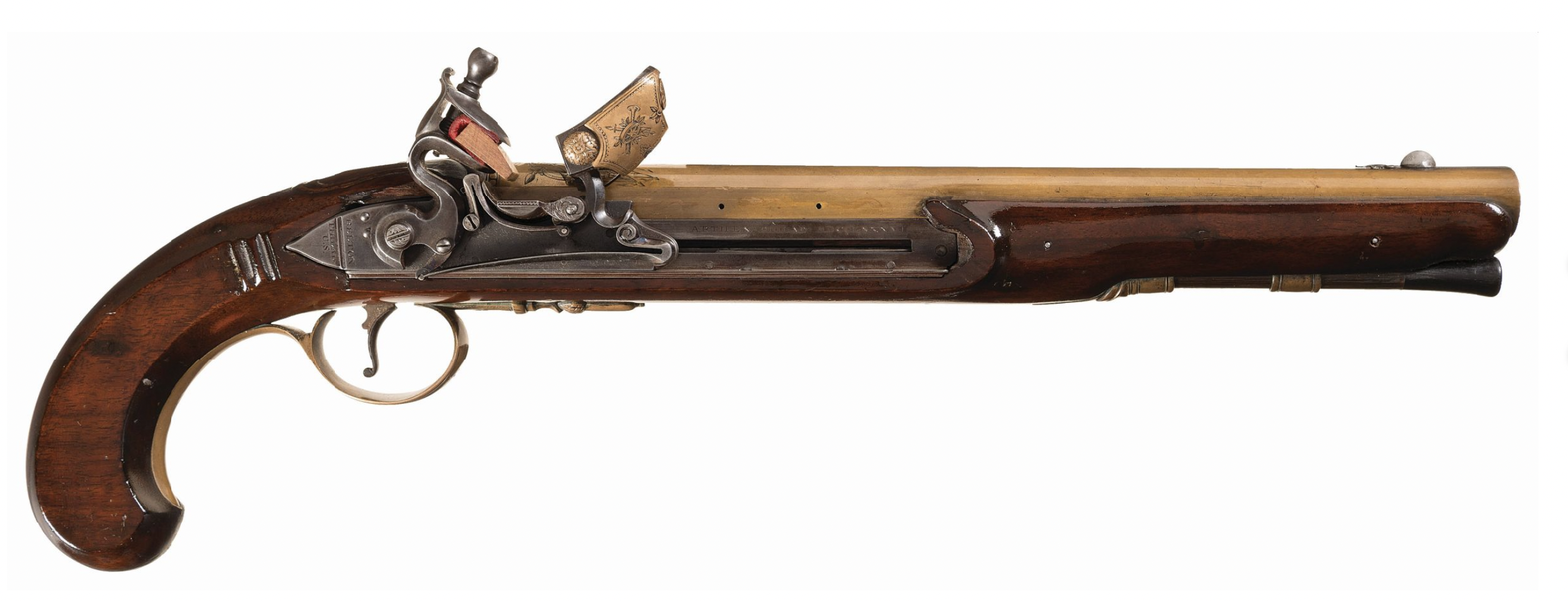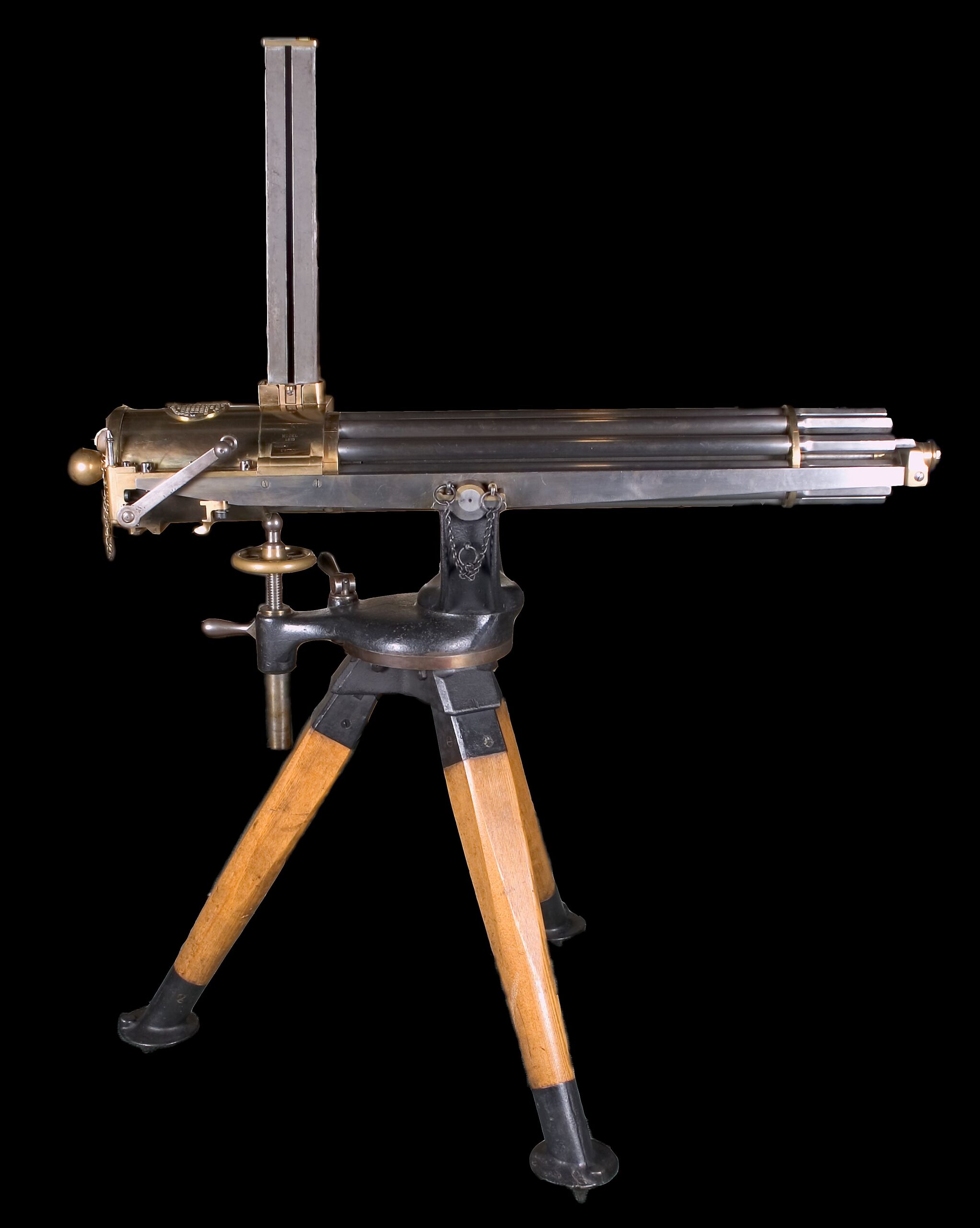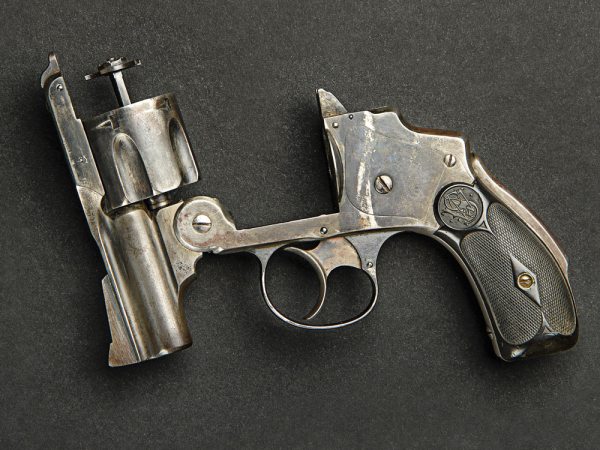We may earn revenue from the products available on this page and participate in affiliate programs. Learn More ›
It’s always fun to talk about bad gun ideas, but what about the good ones that were before their time? Throughout the history of firearm invention, some designs that were actually superior for their era didn’t get adopted at the time. That could have been because they were too advanced for military tactics of the day, too expensive, to slow on delivery, or just good old-fashioned politics got in the way.
There are several weapons and firearm technologies that fall into this category, but these eight represent the most significant examples. Several would go on to become critical advancements in the military world. Here are the best firearms and firearm technology that should have been.

1. Wheellock
The wheellock ignition system was developed in the early 1500s and was the first type of firearm to abandon burning ropes as a means of ignition for a more refined process. To operate a wheellock, the user loaded the gun powder and projectile down the barrel. Once seated, the user lowered a cocking mechanism holding a piece of pyrite. To prepare for fire, the user winded a disc with an external wrench. Once ready to fire, you simply pulled the trigger, releasing a serrated disc to spin and create a spark against the pyrite and fire the gun, similar to the operation of a lighter.
While this may seem somewhat complicated compared to the matchlock, it was far superior. It increased reliability and got rid of an exposed burning flame, which helped conceal the shooter’s presence. In fact, Emperor Maximilian I of the Holy Roman Empire was so scared of the wheellock, he outright banned it. The gun was expensive, however, and the internal components were too complicated to be quickly fixed on the battlefield. While it saw military use abroad, the matchlock remained the standard military arm in the American Colonies prior to the flintlock.

2. Belton Fusil
This flintlock, while oft referenced in pro-gun rhetorical talking points as an early repeater, was actually developed rather late—in 1758. Repeaters (even magazine-fed ones) existed at least century prior. But those firearms were predominantly meant for civilian, not military, markets. The Belton Fusil concept, however, was one that the newly formed American government explored. It operated using superimposed loads similar to that of a Roman Candle. Pressing the trigger once set off a chain of rounds to fire in succession. Joseph Belton, the firearm’s designer, claimed it could fire eight rounds in three seconds. An initial order of these firearms was made by the Continental Congress, but a dispute on cost caused that contract to be canceled. As a result, the military stuck with the standard single shot musket for its infantry. Reports suggest that Belton turned to the civilian market; however, many authorities on the matter question the legitimacy of surviving examples.

3. Hirst Screw Plug
The Hirst Screw Plug is an example of breechloading technology that was forgotten in history due to the advent of the Ferguson Rifle. Both were breechloading firearms but possessed different ways to achieve that. In 1762, John Hirst provided the British Board of Ordnance five breechloaders more than a decade before Patrick Ferguson’s example. While there are many differences to the firearm, the obvious one is the loading procedure. They both utilized the trigger guard to unscrew and reveal a hole in the breech of the gun for loading. However, the Hirst must be turned upside down and the trigger guard completely removed in order to load from beneath the action. And the Ferguson allowed the user to keep the gun upright to load from the top. Ferguson never professed to be the inventor of breechloading technology, giving a nod to his predecessors, but his firearm was the one that saw battlefield use.

4. Hunt Volitional
Only one example of this gun exists, and it can be found at the Cody Firearms Museum (formerly the Winchester Arms Museum) in Wyoming. Why? Because it is the oldest ancestor to the Winchester lever-action rifle. The firearm was designed by Walter Hunt. It was a 12-shot repeater. The most appealing component of the firearm, at least to Oliver Winchester, was the tubular magazine. Hunt filed for his patent on September 17, 1847, and while his style of magazine was almost the first in the United States, the Patent Office issued another similar design six months earlier. This firearm was also meant to be paired with Hunt’s rocket ball ammunition, which would see application in other pre-Winchester lever actions. The Hunt rifle would ultimately be too complex, but the key feature—the tubular magazine—was applied to the Jennings repeating rifle, which would be modified into the volcanic, then to the Henry, and finally Winchester.

5. Gatling Gun
You may be wondering why this gun is on the list. The Gatling Gun was patented by Richard Jordan Gatling in 1862. It’s often misattributed as the first machine gun; however, it does not utilize automatic fire. Rather it uses a hand crank which rotates multiple barrels to fire bullets one at a time in rapid succession. It was large and onerous, though, so it really didn’t see a lot of use during the Civil War, due to the primary style of fighting for the infantry. A notable exemption was in the Siege of Petersburg where early trench warfare was common. The Gatling Gun was ordered and used by other nations probably in larger numbers. The U.S. Army did use three Gatling Guns in the Battle of San Juan Hill. Ultimately, because the Gatling was developed two decades before machine gun technology, early machine guns, including the Model 1895, had better maneuverability, and replaced it. The design was so advanced, however, that an actual example was modified in the post-World War II period to lay the foundation for what would become the Minigun.

6. Burton Light Machine Rifle
The Burton Light Machine Rifle is an early single-soldier portable, selective-fire rifle with an intermediate cartridge. Sound familiar? Those are the similar characteristics as the German STG-44, known as the Sturmgewehr, which is typically credited as the first “assault rifle.” Now, before you scroll straight down to leave a comment: There is a Defense Intelligence Agency definition of an assault rifle, following similar attributes listed above. It is not to be confused with the current term, “assault weapons,” which references legislation of semi-automatic versions of these guns that are similar in appearance rather than operation. The Burton Light Machine Rifle had twin-topped mounted magazines and was chambered the equally ingenious .345 WSL intermediate cartridge. This technology was developed in the United States toward the end of World War I. Why don’t you know of it? Well, if you play the video game Battlefield 1 you may have heard of it. But in terms of production, the war ended before it could be made beyond the prototype. And while I hate to disappoint any Battlefield 1 fans, the gun was not made as an aircraft observer’s weapon that fired incendiary rounds to attack balloons.
READ NEXT: The M1 Garand, the Greatest Generation’s Service Rifle

7. David Marshall Williams’ M1 Carbine Prototype
If you think David “Carbine” Williams invented the M1 Carbine, you’re partly right. Williams started tinkering with firearms when he was in prison serving time for the murder of Deputy Alfred Jackson Pate, who raided on the distillery that housed Williams’ illegal moonshining business. His sentence was ultimately commuted, with the support of the victim’s family, because it was felt his firearms design genius could better serve the country. He worked for many companies, and in 1938 he went to work for Winchester. He was initially sent to redesign Jonathan “Ed” Browning’s semi-automatic rifle. Williams was able to solve an issue with the gas system, creating a better short-stroke gas piston. During the first round of prototypes for the M1 carbine, Williams was not involved except for the gas piston design. He was brought on to direct the creation of the second prototype, but his unwillingness to play with others caused him to be taken off that project. He was permitted to make his own M1 Carbine prototype simultaneously. While some argue his designed prototype was superior, there wasn’t enough time to work out the kinks. So, Williams was allowed back on the project to improve the second prototype which would go on to be adopted by the U.S. government.
Read Next: The Six Best Survival Rifles Under $600

8. EM-2 Rifle
EM-2 type rifles are British stockless rifles, which are better known by their colloquial name: bullpup. The action of the firearm sits is behind the trigger on a bullpup, where it serves as the “stock.” After World War II, NATO was attempting to standardize weaponry for both ammunitions and firearms. As a result, many countries contended for various military contracts. The EM-2 and its variants were England’s contribution to both British and American military trials. The firearm went head-to-head with what would become the M14 and the FN FAL. During testing, the EM-2 performed as well and, in some cases, better than the other two firearms. However, it was chambered initially for .280 and the U.S, was not going to allow that cartridge to be the standard. NATO instead went with the 7.62x51mm (the EM-2 had a 7.62 variant). Regardless, the EM-2 was briefly adopted by the British government, but Churchill overturned that adoption quickly, claiming expense, but really it was because Churchill was a major fan for the FAL. When England attempted a bullpup again, it was the failed L85A1.








